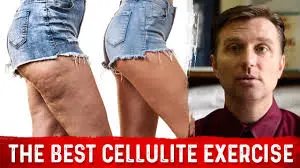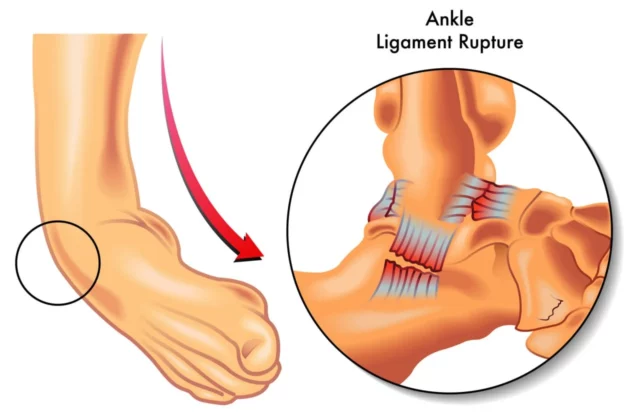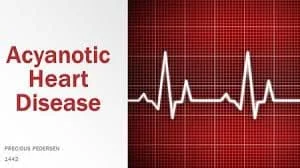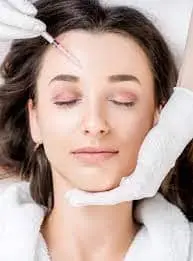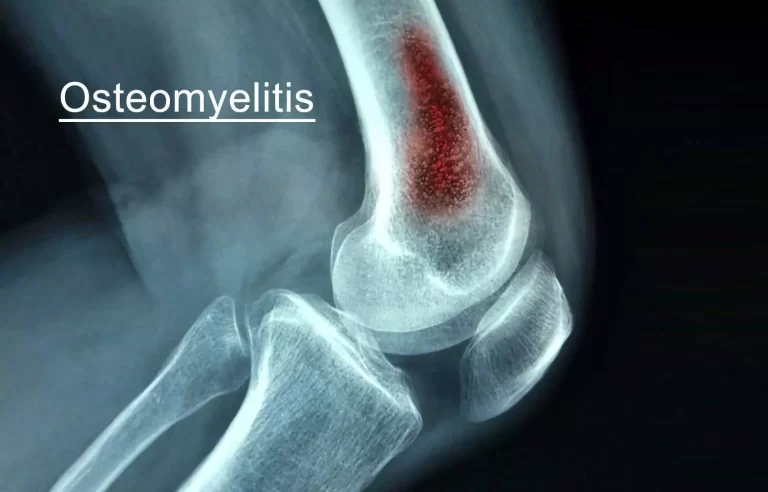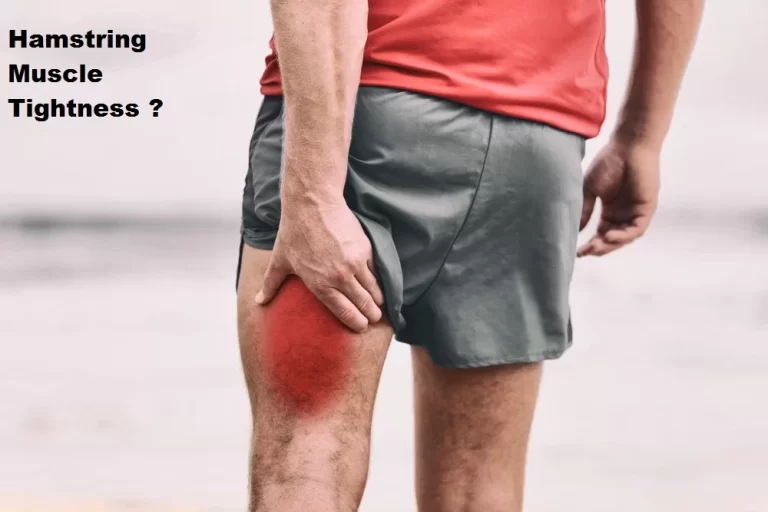Leg Cellulitis Exercises: Easy Ways to Get Moving Again
Is it Possible to Use Exercise to Treat Leg Cellulitis?
As a normal component of the human body, cellulitis affects 80–90% of people, particularly women.
Nevertheless, it’s been called an “issue” that we’ve been socialised to believe we must eliminate, primarily as a result of the constant picture manipulation that presents perfectly smooth skin.
Regrettably, this has caused a lot of individuals to want to get rid of cellulite. To be very honest, exercise by itself cannot eliminate cellulite. Visible cellulite can be present in even the leanest individuals.
Nevertheless, there are steps you may take to lessen the look of cellulite, which might boost your self-esteem.
This article explores the topic of cellulitis in detail, offers helpful advice on how to lessen its presence, and suggests lower-body workouts that will boost your self-esteem and strength in any case.
What is Leg cellulitis?
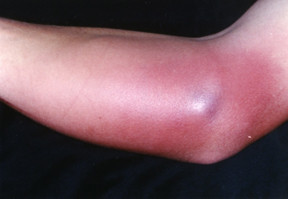
Cellulitis is a common infection of the dermis and subcutaneous skin tissues. The classic symptoms of cellulitis include warmth, erythema, oedema, and discomfort. Since the epidermis is unaffected, person-to-person contact cannot spread cellulitis. It normally goes away if properly diagnosed and treated with the right antibiotics as soon as possible.
Causes of cellulitis:
The skin functions as a barrier to prevent microorganisms and natural skin flora from penetrating the subcutaneous tissue and lymphatic system. Acute infections that affect the deep dermis and subcutaneous tissue can arise from breaks in the skin that allow normal skin flora and other microorganisms to penetrate the dermis and subcutaneous tissue. The most frequent cause of cellulitis is an infection with Streptococcus pyogenes, or group A beta-hemolytic streptococcus.
Skin injuries, surgical incisions, intravenous site punctures, fissures between toes, animal and insect bites, additional skin infections, and individuals with concomitant conditions such as diabetes mellitus, venous insufficiency, peripheral artery disease, and lymphedema are risk factors for cellulitis.
Epidemiology of Cellulitis:
Cellulitis is a very common condition that often affects middle-aged and elderly people. It is comparable for men and women to have cellulitis. About 50 instances occur for every 1000 patient years.
Pathophysiology of Cellulitis:
After the skin is damaged and microbes enter the subcutaneous tissues, cellulitis develops. Beta-haemolytic streptococci or staphylococcus aureus, especially methycillin-resistant strains, are the most frequent infectious agents.
Clinical Presentation of Cellulitis:
Acute, poorly delineated, and spreading erythema, along with discomfort, swelling, and warmth, are typical signs of cellulitis. usually affects the lower leg, although it can happen to any part of the skin or the subcutaneous tissue underneath. Systemic symptoms like fevers and rigours may coexist with regional lymphadenopathy and lymphangitis.
Examination of Cellulitis:
Cellulitis patients usually present with a poorly delineated region of erythema in the afflicted skin area. The erythematous region frequently feels warm to the touch, and palpation causes swelling and pain. The patient may have fevers, exhaustion, and generalised malaise as constitutional signs.
Get a thorough medical history from the patient, paying particular attention to the circumstances surrounding the patient’s discovery of skin abnormalities or the onset of cellulitis.
Inquiring about recent travel, trauma or injuries, history of intravenous drug use, and/or animal or insect bites in the afflicted region are all crucial questions to ask patients.
Additionally, a comprehensive review of the patient’s prior medical history is necessary to assess for potential chronic illnesses such as diabetes mellitus, venous stasis, peripheral vascular disease, chronic tinea pedis, and lymphedema that may predispose a patient to cellulitis. One of the most prevalent co-occurring conditions among patients sent to hospitals for severe bacterial infections, such as cellulitis, is diabetes mellitus. Diabetes patients need a longer course of antibiotic medication and are more likely to need an outpatient follow-up visit after contracting cellulitis.
Examined the region for any signs of skin deterioration. Marking the area with a marker can help you keep an eye out for any ongoing spreading. Palpation of the affected region is necessary to feel for any changes that could point to the establishment of a potential abscess.
- When you gently palpate the afflicted region, make sure to record any purulent discharge, warmth, or soreness.
- Although cellulitis can appear anywhere on the body, it often affects the lower limbs. Rarely is it bilateral.
- Examining the areas between the toes closely is important for evaluating lower extremity cellulitis.
- To keep a watchful eye out for compartment syndrome, make sure your pulse is intact and that your feelings are normal.
- Keep a lookout for any emerging vesicles, bullae, peau d’orange, and lymphadenopathy.
Diagnosis of Cellulitis:
The most frequent method of diagnosing cultures is to use merely a physical examination and history. The diagnosis requires two of the four criteria (tenderness, erythema, oedema, or warmth).
Medical Management for Cellulitis:
Antibiotics are necessary for patients who have moderate cellulitis but no systemic symptoms of infection. The minimal amount of time that oral antibiotic treatment should last is five days.
Hospitalisation for systemic antibiotics may be necessary for individuals exhibiting systemic indications of infection, failing outpatient therapy, immunocompromised, exhibiting increasing erythema, unable to swallow oral drugs, or with cellulitis next to or overlaying an indwelling medical device.
A physiotherapist is not qualified to advise on specific antibiotics or the best options. To help and collaborate with the doctor in selecting the most appropriate antibiotic, the chemist should preferably hold a board specialty in infectious illness.
Physical Therapy Management for Cellulitis:
Therapists should be aware of the signs and symptoms of cellulitis in order to refer patients appropriately, even if there is a lack of evidence about particular physical therapy therapies for the condition. Physical therapists should be knowledgeable about the signs and symptoms of cellulitis as well as its numerous causes and risk factors.
Physical therapists may employ the following techniques with a patient who has cellulitis:
- In order to reduce discomfort, it’s crucial to elevate and rest the afflicted limb.
- Pain management measures include using cold, damp, and sterile bandages and ice.
Preventive measures include the use of compression stockings, the encouragement of exercise, and particular activities like calf pumps while standing in a queue. Assist the patient in understanding the need to practice proper hand hygiene and thoroughly clean any potential skin abrasions.
Can exercise get rid of cellulite?
Exercise can help minimise the appearance of cellulite, but it won’t eliminate it entirely.
Exercise will strengthen the muscles beneath your cellulite. Your muscles will feel better the stronger they are. Additionally, when you feel better, you’ll have greater confidence, which should enable you to see past cellulite and instead emphasise your strength.
Cellulite is the term for visible subcutaneous fat that gives the appearance of “orange peel” or “dimpled.” It primarily affects the thighs and buttocks.
There are three primary layers of skin:
- Epidermis
- Dermis
- Hypodermis, or subcutaneous layer
The fatty tissue called subcutaneous fat, which makes up the third layer, or hypodermis, stores energy in the form of fat. It also acts as insulation and protection, connecting the upper layers of skin to muscle and fascia.
A layer of connective tissue, mostly composed of collagen, is located just above the hypodermis. There are situations where fat can poke through these collagen strands and give the impression of dimples.
Cellulite can occasionally be less noticeable by increasing muscular mass and decreasing body fat. Nonetheless, noticeable cellulite can still be present in extremely thin people.
Exercises for leg cellulitis
Remember that exercising by itself won’t eliminate cellulite. However, strengthening and increasing muscular mass through lower-body activities may help lessen its look.
These nine workouts can help you build stronger lower-body muscles.
- Step-ups:

- Worked muscles included the quadriceps, hamstrings, calves, and core.
- Your glutes will get stronger and your balance will get better with this exercise. Furthermore, you can develop more strength because this unilateral exercise only works one side of the body at a time.
- Step out in front of a locked box or bench two feet at a time. Verify that the surface won’t shift.
- Raise your right foot up onto the bench or box. You should have 90-degree angles in your hips, knees, and ankles. This is where everything begins.
- Next, raise your body by pressing your right foot into the box or bench and contracting your glutes. Keep your left foot in the air rather than placing it on top of the box or bench.
- Next, return to a lower body position. This counts as one rep.
- After 15 to 20 repetitions, swap feet.
- Take your time doing this motion. If necessary, stabilise your equilibrium by putting both of your feet on the box and lowering yourself back down gradually.
- Curtsy lunge:
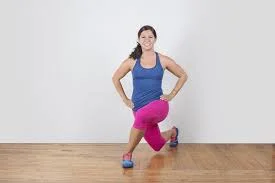
- Muscles worked: quadriceps, calves, core, and glutes, particularly the gluteus medius.
- Working the glute muscle on all sides is the secret to a round booty. The curtsy lunge engages your quadriceps and hamstrings while also striking the gluteus medius, which is crucial for stabilising your hips and knees.
- To begin, place your feet shoulder-width apart and, for balance, bend your arms comfortably in front of you.
- With your chest held high and your core braced, take a step back with your right leg, crossing the midline so that your right foot falls diagonally behind you, much as when you curtsy. Bend both of your legs such that the back knee touches the ground.
- There will be a brief break. To go back to the beginning posture, clench your glutes and push through your left heel. This counts as one rep.
- Finish 8–12 repetitions, then swap sides. After taking a break, finish two more sets.
- Lateral lunge:
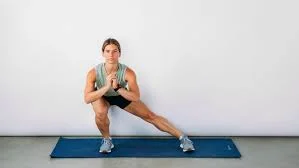
- Muscles engaged include the hamstrings, calves, adductors, quadriceps, and glutes.
- The lateral lunge is an excellent functional exercise that works a variety of lower body muscles.
- Place your both feet shoulder-width apart as you stand upright.
- As you take a large stride to the side, bend your left knee and lift your arms in front of you to maintain balance while imagining that you are sitting back in a chair. You should still have a straight right leg.
- Check out your form here: To properly engage those glutes and hamstrings, your buttocks should be back and down, and your chest should be up. This exercise requires a good deal of hip flexion and range of motion, so don’t force anything that doesn’t feel comfortable.
- Make your way back to the starting position by raising your right foot. After completing 8–12 repetitions on one side, swap legs and perform the same on the other.
- Bulgarian split squat:
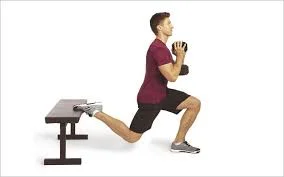
- Hamstrings, glutes, and quadriceps were the muscles that worked.
- This workout on one leg strengthens your buttocks and enhances your balance.
- Faced away from a step or seat, place yourself two feet away from it.
- Place the top of your foot on the bench or step, and bend your left leg. This is where you will begin.
- Subsequently, bend your right knee and descend as far as possible with your body. Maintain a forward-facing posture with your shoulders, hips, and chest.
- Resuming your starting position requires applying pressure to your right heel. This counts as one rep.
- Finish 2–3 sets or 8–12 repetitions.
- Hold a dumbbell in each hand for additional difficulty.
- Reverse lunge:
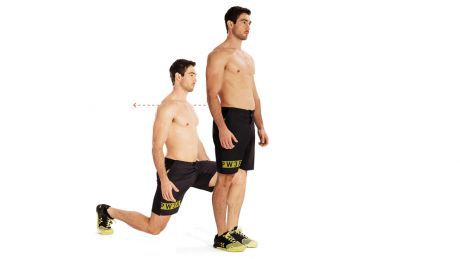
- worked the hamstrings, glutes, and core.
- Reverse lunges are a great substitute for Bulgarian split squats if you don’t enjoy doing them.
- Place both hands on your hips and stand hip-width apart.
- With your right foot, take a big step back and shift your weight to your left foot.
- Lower your right leg until your thigh is perpendicular to the floor and your right knee is at a 90-degree angle while keeping the ball of your right foot on the ground and your heel elevated. You should also have a 90-degree bend in your left knee.
- To raise your body back to the beginning position, clench your glutes and push into your heel. This counts as one rep.
- Do 8–12 repetitions for 2-3 sets.
- Hold a dumbbell in each hand for additional difficulty.
- Glute bridge:
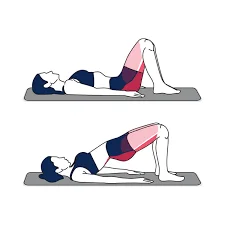
- worked: hamstrings, core, and glutes (particularly the gluteus maximus).
- An excellent exercise to target the glutes is the glute bridge.
- Use a one-legged version of the glute bridge if the conventional one gets too simple. Consider doing a weighted hip thrust for an even greater challenge.
- Begin by lying on the floor with your feet flat on the floor, your knees bent, and your arms at your sides, palms down.
- Breathe in and drive through your heels to lift your hips off the floor with the help of your hamstrings, glutes, and core. Your upper back and your knees should make a straight line.
- Squeeze and pause at the peak, then go back to the beginning position.
- Finish 3 sets of 15-20 repetitions. Aim for 8–12 repetitions for 3 sets if you’re using weights.
- Squats:
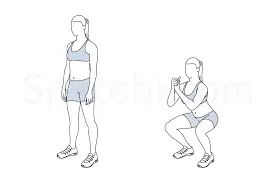
- Worked muscles included the quadriceps, hamstrings, glutes, abdominals, and calves.
- In a traditional go-to workout, squats work your hamstrings, quadriceps, and buttocks. If you’re new to exercising, practice your technique on squats without the use of additional resistance (such as weights or resistance bands).
- As you improve, increase the resistance or volume to create a more difficult task.
- Place yourself slightly apart from hip-width. Put your hands on your hips or clasped in front of you, with your toes pointing slightly out.
- Flex your knees & gradually bring your hips back into a sitting position.
- Keep lowering yourself until your knees form a 90-degree angle and your thighs are parallel to the floor. After then, carefully raise yourself back to the beginning position.
- Complete 2-1 sets of 8–12 repetitions.
- Squat jump:
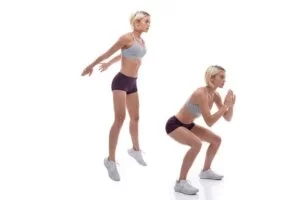
- Worked muscles included the lower back, arms, calves, glutes, hamstrings, quadriceps, and upper body.
- You may increase your strength and agility by doing this powerful motion. But because of its high impact, people with knee problems can find it too strenuous. If so, continue doing standard squats, in which your feet are always flat on the ground.
- To begin, place your arms at your sides and place your feet shoulder-width apart.
- As you lower yourself into a squat, picture yourself relaxing on a chair with your arms out in front of you.
- As you stand back up, launch yourself into a leap, lowering your arms to support the action.
- Squat down right away and repeat after making as soft a landing as you can, allowing the balls of your feet to contact the ground first.
- Finish 3 sets of 10–15 repetitions.
- Romanian deadlift (dumbbell technique):
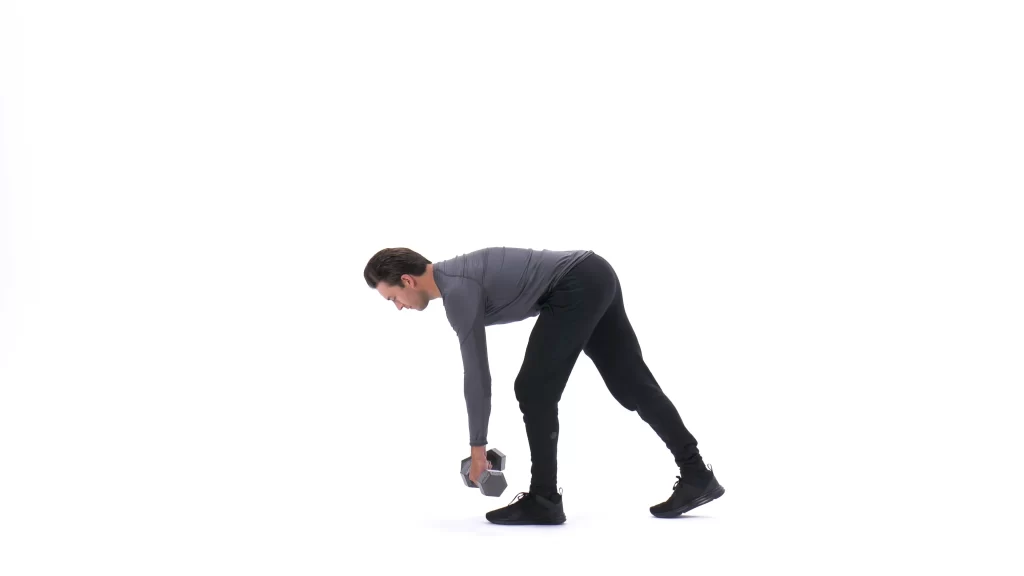
- Hamstrings, glutes, lower back, abdominals, and upper back were among the muscles used.
- Try Romanian deadlifts as a great exercise if you want to develop and strengthen your hamstrings.
- Hold a dumbbell in each hand, palms towards your thighs, and stand hip-width apart. Throughout the workout, make sure your spine is neutral and your core is active.
- Lower the dumbbells towards the floor with a very tiny bend in your knees, pausing when they come to rest in the centre of your shins.
- Then, using your glutes, carefully raise yourself back to the starting position. This counts as one rep.
- Do 8–12 repetitions for 2-3 sets.
- Aerobic exercise:

- A prolonged duration of activity that raises a person’s heart and breathing rates is known as aerobic exercise.
- When combined with a nutritious diet, regular aerobic exercise can help people burn calories and lose weight. Losing weight might minimize the appearance of cellulite in a person.
- Typical aerobic workouts consist of the following:
- Walking
- Running
- Cycling
- Swimming
- Jumping rope
- One can engage in aerobic activity on a daily basis. But it’s crucial to keep in mind that certain workouts, like cycling and running, have a certain risk of damage.
- This is why variety in an aerobic workout programme might be beneficial.
Conclusion
Cellulitis is not something we need to treat or eliminate; it is a natural component of the body.
Up to 90% of people have visible cellulite, despite society’s unhealthy fixation with beautiful, smooth skin. Women and individuals with a genetic predisposition to it often have the highest prevalence rates.
Increasing your muscle mass and decreasing your body fat may help somewhat with your cellulite appearance. But keep in mind that exercise by itself won’t be able to totally eradicate it.
Your health and well-being will improve if you concentrate on sustainable lifestyle practices rather than eliminating a natural component of your body.
FAQ
Can exercise help with cellulitis?
There are several ways to lower your chance of developing cellulitis by taking care of the risk factors. To learn more, speak with your therapist. Movement and Exercise: Moderate movement, exercise, and other activities will improve the efficiency with which your muscles circulate lymph fluid, the fluid responsible for oedema, through your body.
How can I reduce cellulitis on my legs?
Maintain clean, well-hydrated skin to help ward off recurring bouts of cellulitis, a bacterial infection in the skin’s deepest layer. Wear the proper clothes and footwear, use gloves when needed, and take care while cutting your fingernails and toenails to avoid cuts and scratches.
What helps cellulitis heal faster?
For your comfort, treat the afflicted area as often as necessary with a cold, wet towel.
Ask your doctor to suggest an over-the-counter pain killer.
Lift the afflicted body portion up.
Consult with your physician about whether wearing stockings or compression wraps might be beneficial.
Can physical therapy help cellulitis?
Wearing compression clothing and physical therapy are the best ways to alleviate chronic inflammation. Using skin moisturisers and other drugs to treat diseases that cause dry skin and cracking can help prevent cellulitis from developing.
Is walking good for cellulitis?
To lessen any swelling, try to keep your foot higher than your hip. It’s crucial that you support your leg’s circulation, so try to take a little stroll once each hour. Try wriggling your ankles and toes if you are unable to do this.
What are the dangers of cellulitis in the legs?
Tenderness, swelling, and redness are common symptoms of cellulitis. Maintaining good skin care and cleanliness might help ward off cellulitis. Keep an eye out for any indications of infection at any skin cracks. If left untreated, cellulitis can result in shock, amputation, or even death.
How can I reduce cellulitis naturally?
Boosting immunity with a nutritious diet, avoiding “antibacterial overkill” as previously mentioned, cleaning and covering any open wounds on the skin, often washing your hands, and using heat and essential oils to alleviate skin discomfort are some natural cellulitis treatment and prevention strategies.
Reference
- “Cellulitis.” Physiopedia, www.physio-pedia.com/Cellulitis. Accessed 11 Dec. 2023.
- Cpt, Katey Davidson MScFN, Rd,. “Is It Possible to Get Rid of Cellulite With Exercises?” Healthline, 27 Apr. 2022, www.healthline.com/health/fitness-exercise/cellulite-exercises#exercises.
- Rees, Mathieu. 8 of the Best Exercises to Help Get Rid of Cellulite. 27 Feb. 2021, www.medicalnewstoday.com/articles/cellulite-exercises.

